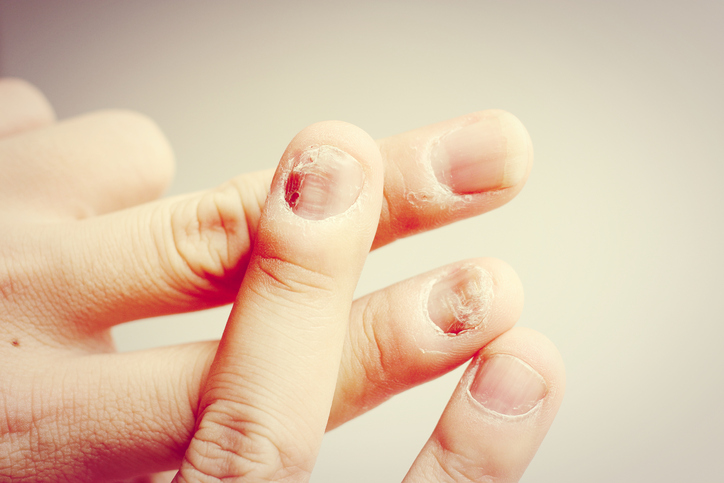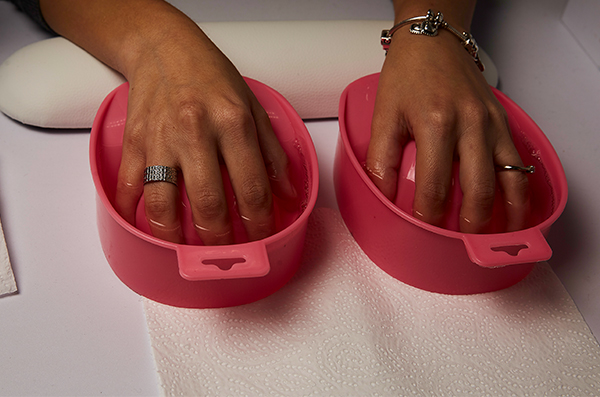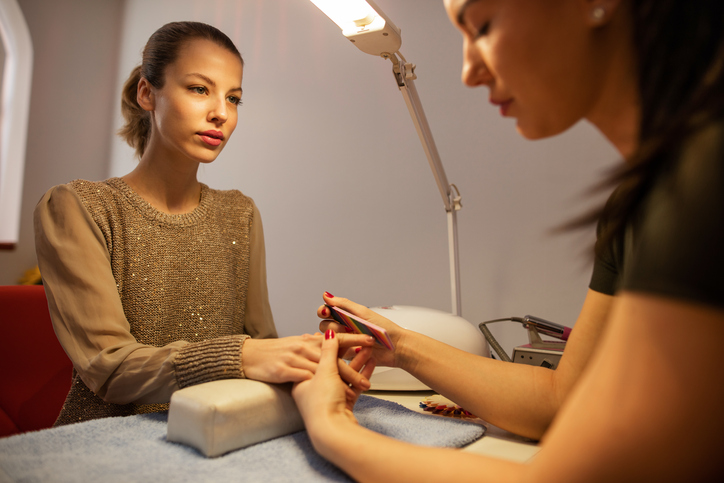Professional application of gel nails (by a qualified nail technician) is paramount to maintaining healthy nails ‒ and so is their proper removal.
Incorrect removal can be seriously damaging to your clients’ nails, and if repeated, that damage can be long-term. More specifically, unorthodox removal of gel nail products can significantly weaken the nails, resulting in peeling, flakiness, and white spots. It may also prohibit successful application in the future, causing gel to lift easily and even stop adhering altogether.
We share the top three gel nail removal mistakes and how to avoid them, according to Talya Bergmann, marketing and operations manager for Bio Sculpture, a professional nail-care brand widely respected for its safe soak-off techniques.

1) Forcing or prying off gel – this is a big no! When gel is ready to come off it should release automatically or ‘bubble’ off the nail. Due to time restraints, technicians may try to force off gel that isn’t ready. But in doing so, they can easily force off the layers of the natural nail plate too, which can result in damage or dehydration on the nail plate.
Try: A second soak-off! That is, buffing and re-wrapping the nail then waiting for a few more minutes. At Bio Sculpture, we always teach the ‘rough and wrap’ method. We ‘rough’ and ‘wrap’ one nail at a time, so by the time you have finished the last nail the first one should be ready to come off. Alternatively, try using a heat pack to help accelerate the removal process and activate the acetone safely.

2) Soaking nails in a bowl of acetone – this can be incredibly dehydrating to the nail plate, as well as the delicate skin and cuticle area surrounding the nail. It may be quicker to place hands in a bowl of acetone than to wrap each finger individually with the foil-method, but in the long term it may cause contact dermatitis or lead to future acetone allergies.
Try: Applying gel remover-soaked cotton wool with foil to each nail. Wrap the foil tightly around the finger (or use soak-off clips or a heat pack) to accelerate the removal process and activate the acetone safely. Applying a cuticle cream prior to wrapping the nail will also help to protect the cuticle area.

3) Over-filing – filing the nail plate with a course file or filing in multiple directions (back and forth) can cause both trauma and damage to the nail plate.
Try: Always file in one direction to avoid trauma. When roughing up the nails before removal do not file past the base layer.
Here is a video demonstrating the new EVO2 removal sachets with medical-grade acetone. They are quick and easy to use and ideal to retail to clients wanting to remove their nails at home or when they are away.
If you would like information about Bio Sculpture’s Gentle Gel Remover click here or visit www.biosculpture.com.au or call 1300 BIO GEL.

